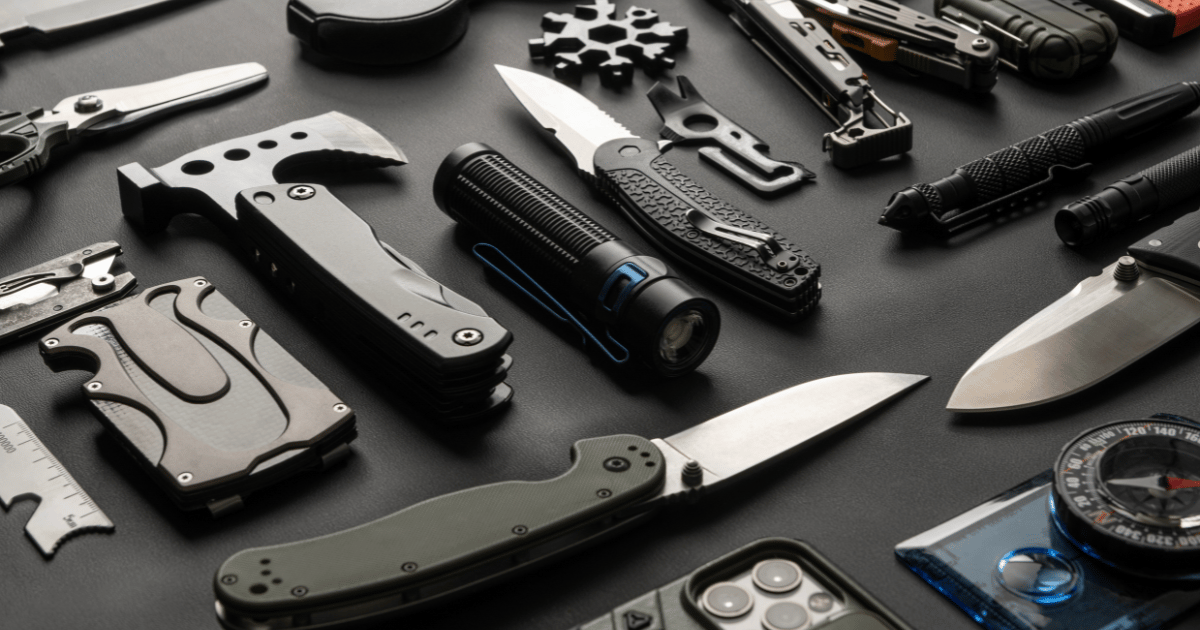Whether you're a seasoned gear enthusiast or just starting to explore the world of everyday carry (EDC), understanding the materials behind your gear can make a significant difference in your buying decisions. Durability, weight, functionality, and aesthetics are all shaped by the materials used. This article delves into the most popular materials in the EDC world and why they remain favorites for enthusiasts.
Why Material Choice Matters in Gear
Durability and Longevity
The primary appeal of durable materials is their ability to withstand wear and tear. Scratches, impacts, and environmental factors can all degrade poorly made gear, whereas high-quality materials keep your tools functional for years.
Weight and Portability
Gear enthusiasts often prioritize lightweight materials to ensure portability without sacrificing performance.
Aesthetics and Feel
The choice of material affects not just functionality but also the tactile and visual appeal. Many users gravitate toward materials that exude ruggedness and sophistication.
Popular Materials in Durable Gear
Titanium: The Lightweight Powerhouse
What Is Titanium?
Titanium is a metal known for its incredible strength-to-weight ratio. It’s 45% lighter than steel but equally strong, making it a top choice for knives, multitools, and even watches.
Why Gear Enthusiasts Love Titanium
Corrosion Resistance: Titanium naturally resists rust, making it perfect for outdoor gear.
Strength: Its high tensile strength ensures that even thin designs remain robust.
Lightweight: Ideal for EDC tools where every gram matters.
Hypoallergenic: Titanium is safe for those with metal allergies.
Applications in Gear
Knife handles and blades
Tactical pens
Watch cases
Carbon Fiber: Strength Meets Sophistication
What Is Carbon Fiber?
Carbon fiber is a composite material made from thin strands of carbon woven together and set in resin. The result is a material that is both lightweight and incredibly strong.
Why It’s Popular in Gear
Strength-to-Weight Ratio: Carbon fiber is even lighter than titanium but offers excellent stiffness and durability.
Aesthetic Appeal: Its sleek, woven appearance makes it a favorite for high-end gear.
Temperature Resistance: It remains stable under extreme temperatures.
Applications in Gear
Knife scales
High-performance flashlights
Premium wallets
G10: The Workhorse of Handle Materials
What Is G10?
G10 is a composite material made by layering fiberglass cloth in epoxy resin and then compressing it under high pressure.
Why Gear Enthusiasts Rely on G10
Durability: G10 is nearly indestructible and can handle extreme impacts.
Grip: It provides excellent texture for a secure hold, even when wet.
Affordability: G10 offers a great balance of performance and cost.
Applications in Gear
Knife handles
Tactical flashlights
Custom scales
Stainless Steel: The Classic Choice
What Is Stainless Steel?
Stainless steel is an alloy made primarily of iron, with chromium added to improve corrosion resistance.
Why It’s Still a Favorite
Rust Resistance: Its ability to resist rust and corrosion makes it reliable in humid or marine environments.
Strength: While heavier than titanium, stainless steel offers unparalleled durability.
Low Maintenance: It requires minimal upkeep and maintains its polished look.
Applications in Gear
Blades
Multitool components
EDC rings and accessories
Aluminum: Lightweight and Versatile
What Is Aluminum?
Aluminum is a lightweight metal often used in gear where portability is key.
Why It’s a Practical Choice
Lightweight: Perfect for reducing the overall weight of gear.
Corrosion Resistance: Anodized aluminum resists environmental damage.
Cost-Effective: Aluminum is more affordable than titanium or carbon fiber.
Applications in Gear
Flashlight bodies
Pen casings
Backpack frames
Micarta: A Vintage Classic
What Is Micarta?
Micarta is a composite material made by layering fabric or paper with resin and curing it under pressure.
Why Enthusiasts Value Micarta
Customizable Appearance: Its finish can vary depending on the materials used.
Grip: Like G10, it offers excellent texture, but with a more vintage aesthetic.
Lightweight: Suitable for EDC items.
Applications in Gear
Knife scales
Sheaths
Custom handles
How to Choose the Right Material for Your Needs
Consider Your Environment
For outdoor use, prioritize corrosion-resistant materials like titanium or stainless steel.
For urban carry, lightweight options like carbon fiber or aluminum work well.
Balance Weight and Durability
Titanium and carbon fiber strike the perfect balance for weight-conscious users.
Stainless steel, while heavier, offers unmatched ruggedness.
Aesthetics vs. Practicality
For premium looks, opt for carbon fiber or anodized aluminum.
For a rugged, utilitarian feel, G10 or Micarta are excellent choices.
Final Thoughts
The materials you choose for your gear directly impact its performance, longevity, and overall user experience. Whether you prefer the ultralight strength of titanium, the sleek sophistication of carbon fiber, or the rugged utility of G10, there’s a material that fits your needs. Understanding these materials will help you make informed decisions and appreciate the craftsmanship behind your favorite tools.
What’s your go-to material for EDC gear? Please reply and let us know!

